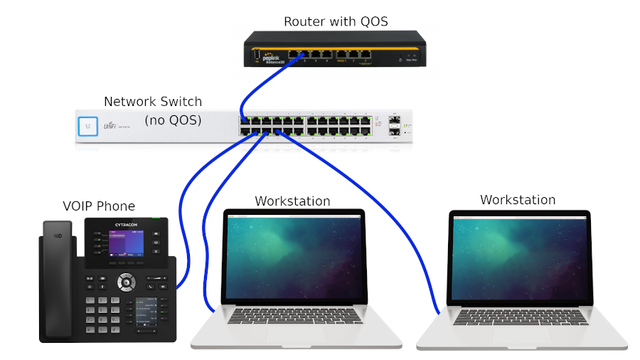I have a router (Peplink Balance 20) with QOS capabilities connected to a Network switch (Ubiquiti US-24 Unifi Switch) that does not have QOS capabilities. The switch is then connected to some VoIP phones as well as some workstations. If I configure QOS on the router will it be effective for the VoIP system or do I need to have a network switch that also has QOS? All cables are CAT 6a.
Here is an image illustrating more clearly what I'm trying to do:

Here is an image illustrating more clearly what I'm trying to do:


